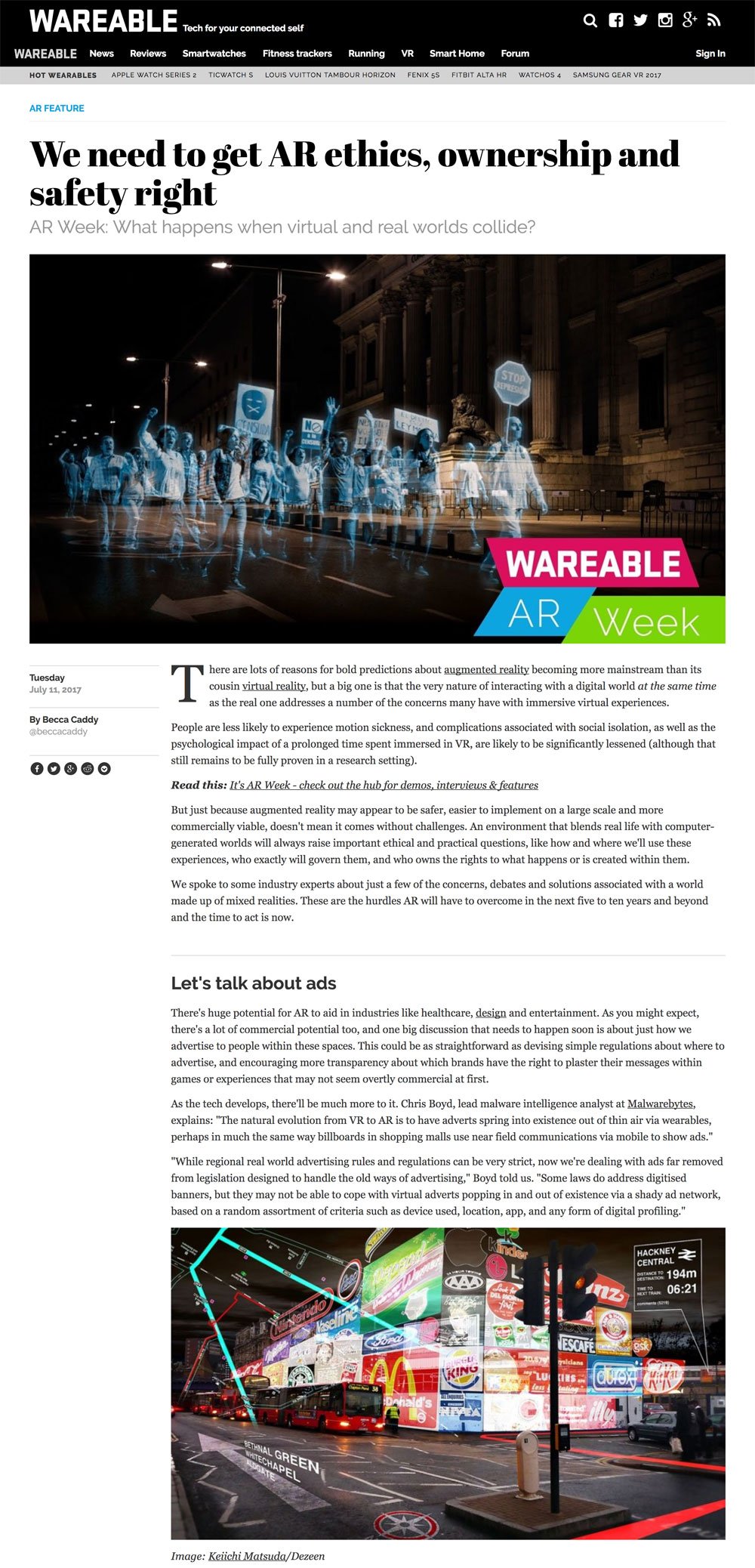We need to get AR ethics, ownership & safety right
WAREABLE, JULY 2017
There are lots of reasons for bold predictions about augmented reality becoming more mainstream than its cousin virtual reality, but a big one is that the very nature of interacting with a digital world at the same timeas the real one addresses a number of the concerns many have with immersive virtual experiences.
People are less likely to experience motion sickness, and complications associated with social isolation, as well as the psychological impact of a prolonged time spent immersed in VR, are likely to be significantly lessened (although that still remains to be fully proven in a research setting).
But just because augmented reality may appear to be safer, easier to implement on a large scale and more commercially viable, doesn’t mean it comes without challenges. An environment that blends real life with computer-generated worlds will always raise important ethical and practical questions, like how and where we’ll use these experiences, who exactly will govern them, and who owns the rights to what happens or is created within them.
We spoke to some industry experts about just a few of the concerns, debates and solutions associated with a world made up of mixed realities. These are the hurdles AR will have to overcome in the next five to ten years and beyond and the time to act is now.

